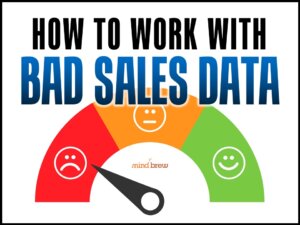In periods of market volatility—when economic conditions are churning, costs are fluctuating, supply chains are wobbly, and demand patterns are stuttering—companies have to make some tough calls.
Price increases become necessary. Inventories have to be allocated and prioritized. Quoting and approval policies may need to be tightened. Contract terms might have to be shortened. And certain customer segments or product lines might need to be deprioritized altogether.
While these decisions are critical and often unavoidable, they come with risk.
Of course, we’ll do everything we can to mitigate that risk when we’re taking the actions in the first place—being as surgical as possible, targeting and prioritizing our actions thoughtfully, communicating clearly and credibly, and proactively managing everyone’s expectations.
But even the best-executed moves can have unintended consequences. That’s why we should not only focus on mitigating risks on the front end—we should also be mindful of the risks that can manifest on the back end.
The Sneaky Risk That’s Difficult To Spot
In most commercial markets, customer defection and attrition isn’t just a nuisance. It’s an existential threat. Commercial relationships can be worth many millions over decades and are not readily replaceable. So just losing a small number of key accounts can cause massive, irreparable damage.
But with commercial relationships, where buyers prefer to have multiple suppliers on the hook, defection doesn’t typically happen all at once, with a slammed door, a dramatic phone call, or a break-up letter. It tends to happen more gradually over time, through changes in buying behaviors and purchasing patterns.
And while frontline sales reps are theoretically in the best position to notice these changes, they’re usually focused elsewhere and these dynamics can be really hard to spot with the naked eye…until it’s too late.
- Steady-State Defection: A customer keeps ordering the same volume as always, giving the illusion that everything is fine. But they’re actually diverting all incremental purchases to competitors. You’re losing share of their growing wallet, but you just can’t see it.
- Mix Shift Defection: The customer’s spend may look stable on the top line, but they’re actually buying a less profitable mix of products—often favoring commodity lines over high-margin or strategic offerings. This lowers your profitability and turns you into a less critical supplier.
- Industry Dip Defection: When entire sectors slow down or take a nosedive, it’s easy to write off shrinking purchases as a macro issue. But if some accounts are dropping faster or more significantly than their segment or sector peers, that can be a red flag that they’re buying elsewhere.
Each of these dynamics and patterns is very subtle. They may not even show up in topline sales reports. And most individual sales reps simply will not have the time, tools, inclination, or aptitude to detect them early on.
Sales Ops Can Provide an Insurance Policy
In Sales Operations, we have the unique cross-functional perspective, analytical horsepower, and data access to monitor, identify, and surface what others can’t. And while it’s essential to mitigate as much risk as we can upfront, Sales Ops can add a powerful second layer of protection on the back end: spotting the early signs of customer defection and attrition before they can do too much damage.
In the How to Use Sales Analysis to Drive More Growth training session, we explore and illustrate “defection detection” in more detail, but the basic process is straightforward:
- Establish Analytical Defection Monitoring
Leverage internal sales data to monitor key customer behaviors over time. Identify changes in purchasing frequency, order value, category mix, and margin contribution. Look for telling deviations from customer-specific baselines and historical trends. - Develop Segment- and Category-Level Views
Drill down deeper than total revenues. Analyze spending at the product-line or category level to detect mix shifts. Compare specific accounts to their segments or sectors to spot customers whose declines outpace their peers. These types of outliers are often canaries in the coal mine. - Implement Prioritized Retention Risk Alerts
Develop analytical routines for flagging specific accounts that are exhibiting one or more of these defection dynamics. Quantify and dollarize the gaps and deviations to help prioritize the retention risks. Then surface the most valuable retention risks to the assigned reps for investigation and action. - Add Scale/Speed with Predictive Technologies
While manual analysis can suffice for initial implementations, it becomes impractical at scale. Fortunately, there are predictive analytics tools and AI-based systems that can automatically analyze every account at scale and send real-time retention alerts when the warning signs appear.
From Risk Mitigation to Strategic Insurance
In chaotic and unpredictable market conditions, proactive risk mitigation around the difficult decisions our organizations are making isn’t optional. But we need to recognize that even the most thoughtful and judicious approaches to our actions can’t eliminate all of the risks upfront. And this is particularly true when it comes to customer defection risks, which tend to manifest gradually and in somewhat subtle ways that can be difficult to spot.
By putting more robust “defection detection” systems and practices in place, Sales Ops can not only help mitigate risk on the front end, we can help “mind the exits” and provide a critical layer of insurance on the back end.














